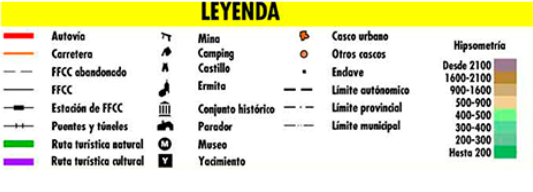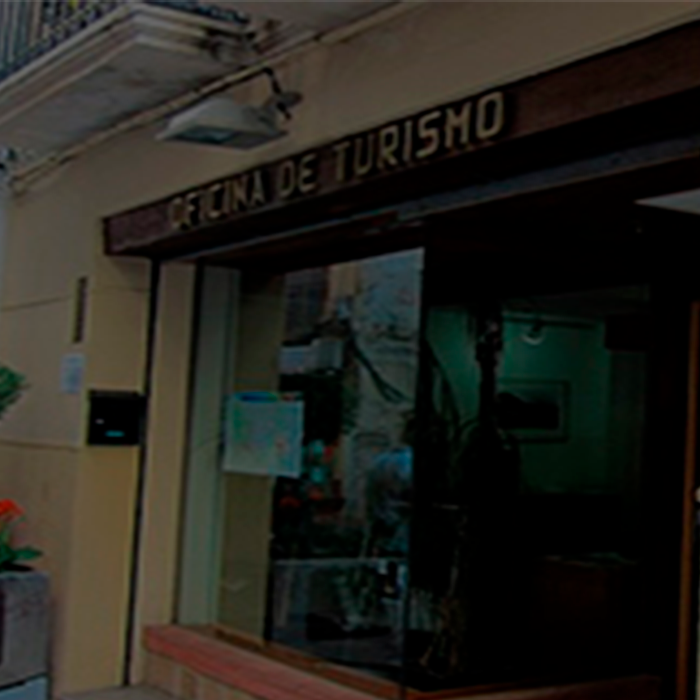Estás desactualizado...
Es hora de actualizarse para poder visualizar correctamente la web de Jaén Paraíso Interior


Despeñaperos, a gorge carved by a river of the same name into the slate rocks of Sierra Madroña, runs from northwest to southeast, breaking the uniformity of Sierra Morena with its rugged craggy shapes. The rocky walls, falling almost vertically, reveal the arrangement of the different strata. At the spot known as 'Los Órganos' ('The Organs'), some of the rocks are shaped like gigantic organ tubes.
Portuguese, holm and cork oaks (Quercus suber, Quercus ilex and Quercus faginea) constitute the most representative vegetal species of Despeñaperros. This autoctonous vegetation contrasts sharply with the green areas reforested with stone pines (Pinus pinea).
Among the typical animal species living in this protected Mediterranean scrubland habitat, the following occur in substantial populations: genets (Genetta genetta), beech martens (Martes foina), wildcats (Felis silvestris) and mongooses (Herpestes ichneumon). Wolves and lynxes (Lynx pardinus) have occasionally been spotted in the area. As in most of Sierra Morena, deer and boar hunting is a common sport activity.
Many different species of birds also live in the Natural Park of Despeñaperros: Spanish imperial eagles (Aquila adalberti), griffon vultures (Gyps fulvus), European serins (Serinus serinus), rock thrushes (Monticola) and wheatears (Oenanthe). The Valdeazores gully is of great tourist interest for its outstanding botanical diversity. One of the main cultural attractions of the area is the existence of major prehistoric Iberian sanctuaries, located in the 'Collado de los Jardines' ('Gardens' Pass'). Human presence in this natural space dates back to the Neolithic period. The archeological remains found in the 'Cueva de los Muñecos' ('Dolls' Cave'), one the major sanctuaries in Spain, date back to this period. The rock paintings found in the 'Cuevas de las Vacas del Retamoso' ('Cave of the Retamoso Cows') are also of great artistic and historical value.
Outside the limits of the Natural Park, very near the village of Aldeaquemada, the river Guarriza suddenly turns into a spectacular waterfall calleed 'La Cimbarra'. The whole area, comprising 534 ha. (1319 ac.), has been declared a Nature Reserve. Near the Cimbarra Waterfall, we find a whole group of important caves and shelters with Levantine and Schematic Rock Art on their walls that were declared a World Heritage Site by UNESCO in 1998: 'Tabla del Pochico', 'Poyos de la Cimbarra', 'Garganta de la Hoz'...
Information links
GEOGRAPHIC LOCATION
North of the province
MUNICIPALITIES
Santa Elena
COORDINATES
38º 23'N; 3º 32'O
STATEMENT DATE
1989
SURFACE
7.649 ha. (18.901 ac.)
ALTITUDE
Between 600 and 1.174 m. (1.968 and 3.851 ft.) (Peña de Malabrigo - 'Malabrigo Rock')
CLIMATE DATA
- Average monthly temperatures: Between 8ºC (46 F) (January) and 29ºC (84 F) (July)
- Average annual rainfall: 650 mm. (25 in.)
MAIN TRAININGS
Rock gorges, Mediterranean forest and pine tree reforestations.
PARK OFFICE
c/ Fuente del Serbo, nº 3. 23071 Jaén
Tel.: +34 953 012 400
Fax: +34 953 012 508
E-mail: pn.despenaperros.cma@juntadeandalucia.es
VISITORS CENTER
Puerta de Andalucía
Autovía de Andalucía (A4), Km. 257. Santa Elena
Tel.: +34 953 664 307
OTHER PROTECTION FIGURES
Special Protection Area (SPA) for Wild Birds [ZEPA (2002)]
OTHER EQUIPMENT FOR PUBLIC USE
- Recreational Area 'Puente Morros'
- Base shelter 'Collado de la Aviación'
Empedraillo Path
Santa ElenaPath Barranco de la Niebla
Santa ElenaSendero Barranco de Valdeazore ...
Santa ElenaThe Castañar de Valdeazores pa ...
Santa ElenaRecreational area 'La Aliseda' ...
Santa ElenaCity Centre
Santa ElenaCastle of Navas de Tolosa
La CarolinaCueva de los Muñecos ('Dolls' ...
Santa ElenaSelect the cookies you want to accept on this website.
You can find more detailed information about the use of cookies and their descriptions in our cookies and privacy policy.Functional cookies allow our website to function correctly. These technical cookies must be activated to use our page and our services.
See cookies we useAnalytical cookies help us understand how customers like you use websites like this. This is how we can improve our website, apps and communications, and also ensure that we continue to be interesting and relevant.
See cookies we useBoth this website and our trusted collaborators use third-party cookies. These cookies are used to display personalized advertisements on this and other websites. These ads are based on your browsing. These cookies are also used to integrate social media on our site, allowing you to "Like" content and share pages or products on social media.
See cookies we use| com.julditec.cookies.nombre | JSESSIONID |
| Host | www.jaenparaisointerior.es |
| Duration | 365 days |
| Type | com.julditec.cookies.propia |
| Category | Functional cookies |
| Description | Identifies the user's session |
| com.julditec.cookies.nombre | GUEST_LANGUAGE_ID |
| Host | www.jaenparaisointerior.es |
| Duration | 365 days |
| Type | com.julditec.cookies.propia |
| Category | Functional cookies |
| Description | Identifies the language selected by the non-logged in user |
| com.julditec.cookies.nombre | COOKIE_SUPPORT |
| Host | www.jaenparaisointerior.es |
| Duration | 7300 days |
| Type | com.julditec.cookies.propia |
| Category | Functional cookies |
| Description | Indicates if the browser supports cookies |
| com.julditec.cookies.nombre | COOKIE_CONSENT |
| Host | www.jaenparaisointerior.es |
| Duration | 7300 days |
| Type | com.julditec.cookies.propia |
| Category | Functional cookies |
| Description | Indicates if the user has accepted cookies |
| com.julditec.cookies.nombre | _ga |
| Host | www.jaenparaisointerior.es |
| Duration | 730 days |
| Type | Third parties |
| Category | Analytical cookies |
| Description | To store and count page views. |
| com.julditec.cookies.nombre | _gid |
| Host | www.jaenparaisointerior.es |
| Duration | 730 days |
| Type | Third parties |
| Category | Analytical cookies |
| Description | To store and count page views. |
| com.julditec.cookies.nombre | _gat_UA-15416038-6 |
| Host | www.jaenparaisointerior.es |
| Duration | 730 days |
| Type | Third parties |
| Category | Analytical cookies |
| Description | To store and count page views. |
| com.julditec.cookies.nombre | _gcl_au |
| Host | www.jaenparaisointerior.es |
| Duration | 90 days |
| Type | Third parties |
| Category | Marketing cookies |
| Description | To store and track conversions. |





